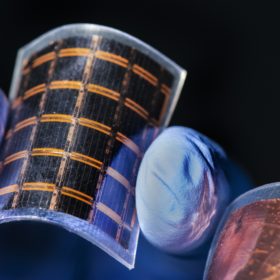
The U.S. National Renewable Energy Laboratory reports further progress in bringing down the cost of III-V solar cells. Scientists have refined their ‘brand new, 50-year-old’ D-HVPE technology to speed up the production rate for gallium arsenide solar cells by a factor of more than 20. The development is a potential step toward making incredibly efficient solar cells cost effective for everyday purposes.
Gallium arsenide (GaAs) and other III-V materials – named after the groups in the periodic table they belong to – are among the best known in terms of efficiency potential for solar cells. But cost has so far limited them to niche applications powering satellites and drones.
Last year, scientists at the United States National Renewable Energy Laboratory (NREL) began working with a process called dynamic hydride vapor phase epitaxy (D-HVPE) – which many in the solar R&D community thought outdated and inefficient – and found it could greatly reduce production time for cells, significantly reducing costs. At the time, Kelsey Horowitz of the NREL’s Strategic Energy Analysis Center said, with further optimizations to the process and economies of scale the production cost for III-V solar cells could fall to $0.20-0.80/W.
The NREL has now published details of the first of those optimizations. In a paper published in Nature Communications, the scientists report enhanced growth rate for a base layer of around 23 seconds, compared to more than eight minutes under the previous process. “If we can get the costs down like we think we can, that opens up a huge number of markets where these devices would be useful,” said senior NREL scientist Aaron Ptak. “Anywhere you want a high-efficiency device that’s thin, light and flexible – electronics charging cases, electric vehicles, building-integrated PV, rooftops, drones.”
More than 29% efficiency
The D-HVPE process has already produced cells with 25% efficiency. The NREL team expects to achieve 27% using its design and says the higher efficiencies already achieved at much slower growth rates should not be out of reach. “Fundamentally, we see no reason that we cannot reach the more-than-29% efficiencies of MOVPE”, said paper co-author Kevin Schulte, referring to the metal organic vapor-phase epitaxy process. “There are some technical hurdles we need to clear to get there but we are working on these.”
The team used D-HVPE to grow GaAs layers at a speed of up to 320 micrometers per hour, and 206 micrometers per hour for indium-gallium phosphide – used both as a passivating layer in GaAs cells and a light absorbing layer itself. The NREL researchers also said the process eliminates many of the expensive precursor materials required in MOVPE production.
“What we’re promising is the same device efficiency – the same material quality – but at greatly reduced cost,” added Ptak. “High growth rates leading to high throughput are one of the ways we’re going to get to lower costs.”
Lắp đặt điện mặt trời Khải Minh Tech
https://ift.tt/2X7bF6x
0906633505
info.khaiminhtech@gmail.com
80/39 Trần Quang Diệu, Phường 14, Quận 3
Lắp đặt điện mặt trời Khải Minh Tech
https://ift.tt/2ZH4TRU
Không có nhận xét nào:
Đăng nhận xét